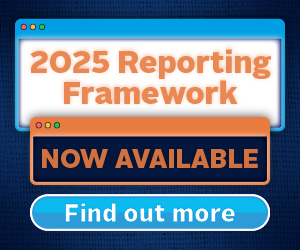All HQ: Europe articles – Page 6
-
 Case study
Case studyEU taxonomy alignment case study: Amundi
ORGANISATION DETAILS Name Amundi Signatory type Asset manager Region of operation Global Assets under management €1,653bn (as at 31/12/2019) COVERED IN THIS CASE STUDY Name of fund an Amundi green bonds strategy Asset class Fixed income ...
-
 Case study
Case studyEU taxonomy alignment case study: KBI
ORGANISATION DETAILS Name KBI Global Investors Signatory type Investment manager Region of operation Global Assets under management Approx. €9.2bn COVERED IN THIS CASE STUDY Asset class Equities Geography Global including emerging markets Sector ...
-
 Case study
Case studyEU taxonomy alignment case study: Nordea
ORGANISATION DETAILS Name Nordea Asset Management Signatory type Asset manager Region of operation Global COVERED IN THIS CASE STUDY Environmental objective Mitigation and adaptation Economic activity All Nordea has ...
-
 Case study
Case studyEU taxonomy alignment case study: AP Pension
AP Pension believes that a common definition of what is considered sustainable is a fundamental element of providing sustainable investment solutions.
-
 Case study
Case studyEU taxonomy alignment case study: Credit Suisse
Credit Suisse (CS) offers sustainable investment solutions in line with its ESG Framework by specifying criteria and thresholds for sustainable portfolios.
-
 Case study
Case studyEU taxonomy alignment case study 2: Aberdeen Standard Investments
TASI recognises the merit of the EU taxonomy initiative. It is extremely valuable for investors to be able to identify and objectively classify business activities that materially contribute to climate mitigation and other sustainability objectives.
-
 Case study
Case studyEU taxonomy alignment case study: MN
The EU taxonomy can help show which eligible economic activities are environmentally sustainable and reflect a shift in the regulatory understanding of ’sustainable investing’ from risk mitigation to positive contribution, offsetting concerns over “greenwashing”.
-
 Case study
Case studyEU taxonomy alignment case study 1: Aberdeen Standard Investments
ASI recognises the merit of the EU taxonomy initiative. It is extremely valuable for investors to be able to identify and objectively classify business activities that materially contribute to climate mitigation and other sustainability objectives.
-
 Case study
Case studyEU taxonomy alignment case study: ESG Portfolio Management
ESG Portfolio Management’s mission is to advise a diversified set of investment funds and mandates, including on ESG factors, SDG impacts and climate risk.
-
 Case study
Case studyEU taxonomy alignment case study: Royal London Asset Management
RLAM has long recognised that there is a need for a uniform definition of sustainable investing.
-
 Case study
Case studyEU taxonomy alignment case study: Carmignac
Carmignac launched a fund in May 2020 to support solutions for climate mitigation while actively engaging with companies to transition their business models and operations to a lower carbon paradigm.
-
 Case study
Case studyEU taxonomy alignment case study: CORESTATE
We welcome the EU taxonomy. Studies show that one of the biggest challenges the sector faces is the lack of a common taxonomy to define the minimum criterion and requirements for sustainable activities.
-
 Case study
Case studyEU taxonomy alignment case study: BlueBay
BlueBay supports the Commission’s Action Plan to ensure future economic development is founded on environmentally sustainable and socially responsible practices.
-
 Case study
Case studyEU taxonomy alignment case study: La Française
La Française has been involved in responsible investment for more than a decade and our Carbon Impact product series has been a key element of our ESG investment strategy.
-
 Case study
Case studyEU taxonomy alignment case study: Robeco
In April 2020, Robeco launched a Global Green Bond (GB) fund. The eligibility of GBs is based on a proprietary framework, under which the use of issuance proceeds should be aligned with the EU Taxonomy.
-
 Case study
Case studyEU taxonomy alignment case study: International Woodland Company
The IWC Group is an investment advisor and manager with nearly 30 years of global experience in responsible investing in natural capital landscapes.
-
 Case study
Case studyEU taxonomy alignment case study: Swedbank Robur
The EU Taxonomy will impact the investment community in many ways. However, it is primarily a tool that will facilitate capital allocation to environmentally sustainable activities, enabling investors to identify and respond to opportunities.
-
 Case study
Case studyEU taxonomy alignment case study: Osmosis Investment Management
Osmosis believes the taxonomy is a useful tool for investors to improve their analysis of corporate sustainability initiatives.
-
 Case study
Case studyEU taxonomy alignment case study: La Financiere de l’Echiquier
La Financière de l’Echiquier has been involved in responsible investment for more than ten years and currently manages six Socially Responsible Investment (SRI) funds. We also manage other funds within an ESG integration strategy and as responsible asset managers we strive to understand, implement and comply as quickly as possible ...
-
 Case study
Case studyEU taxonomy alignment case study: Impax Asset Management
Impax is a specialist asset manager focused on investing in opportunities arising from the transition to a sustainable economy.



